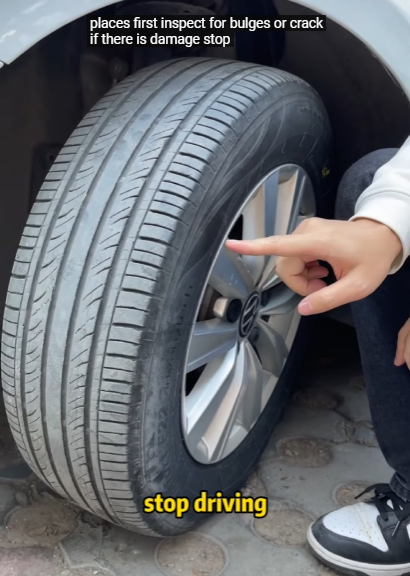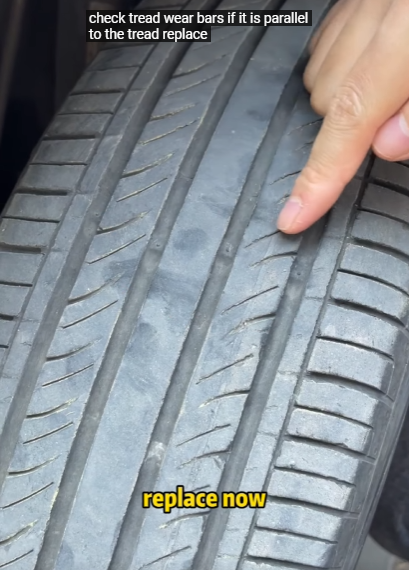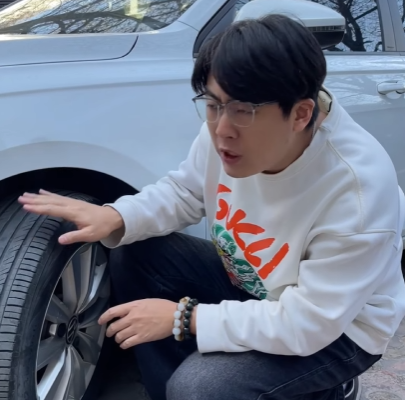
A car tire explosion, or blowout, can be a terrifying and dangerous experience, especially if it happens while driving at high speeds. Knowing how to react and what steps to take before, during, and after a tire explosion can help you stay safe and prevent accidents. This guide will walk you through everything you need to know to handle a tire blowout effectively.

Understanding Car Tire Explosions
A tire explosion occurs when a tire rapidly loses air due to a puncture, structural failure, or overheating. This sudden loss of air pressure can cause the vehicle to lose control, making it difficult for the driver to steer. Understanding why tires explode can help in preventing such situations.
Common Causes of Tire Blowouts:
- Underinflation – Low tire pressure causes excessive flexing, leading to overheating and eventual failure.
- Overloading – Exceeding the recommended weight capacity puts extra pressure on tires.
- Potholes and Road Hazards – Sharp objects or deep potholes can puncture or severely damage tires.
- Worn-Out Tires – Bald or damaged tires lose their ability to maintain air pressure effectively.
- Excessive Speed – High-speed driving generates heat and increases the risk of blowouts.
- Defective Manufacturing – Poorly made tires can have structural weaknesses

eWhat to Do When a Tire Explodes While Driving?
If a tire blows out while driving, staying calm and reacting correctly can mean the difference between a minor incident and a major accident. Follow these steps to regain control:
1. Stay Calm and Keep a Firm Grip
- Keep both hands on the steering wheel and maintain a firm grip.
- Avoid sudden movements or jerky steering.
2. Do NOT Slam the Brakes
- Your immediate reaction might be to brake hard, but this can cause the car to spin or skid.
- Instead, allow the car to slow down gradually by easing off the accelerator.
3. Maintain Steering Control
- Try to keep the vehicle moving straight.
- If the rear tire has blown out, be extra cautious as the back end may sway.
4. Let the Car Slow Down Naturally
- Take your foot off the gas but do not abruptly decelerate.
- If you must use the brakes, apply them gently once the car has slowed to a manageable speed.
5. Pull Over Safely
- Once your speed is reduced, carefully steer towards the shoulder or a safe stopping point.
- Turn on your hazard lights to alert other drivers.
6. Exit the Vehicle with Caution
- If it’s safe, get out of the car and move away from traffic.
- If on a busy highway, stay inside the vehicle until help arrives.

How to Handle a Tire Blowout on Different Terrains
On the Highway
- Maintain control and signal before moving to the side.
- If possible, avoid stopping in a lane and find a safe spot.
On a Curvy Road
- Gently counter-steer if the car starts drifting.
- Reduce speed gradually before attempting to pull over.
In Heavy Traffic
- Turn on hazard lights to alert other drivers.
- Maintain lane control until you can safely exit traffic.

Preventing a Tire Explosion
While tire blowouts can be unpredictable, taking preventative measures significantly reduces the chances of experiencing one.
1. Regularly Check Tire Pressure
- Maintain the manufacturer’s recommended PSI.
- Use a reliable tire pressure gauge and check at least once a month.
2. Inspect Tires for Wear and Damage
- Look for cracks, bulges, or worn tread.
- Use the penny test: insert a penny into the tread—if you see Lincoln’s head, it’s time to replace the tire.
3. Avoid Overloading Your Vehicle
- Check the vehicle’s load capacity in the manual.
- Distribute weight evenly when carrying heavy loads.
4. Drive Cautiously on Poor Roads
- Avoid potholes and road debris when possible.
- Drive at moderate speeds to reduce impact damage.
5. Replace Old Tires
- Tires should be replaced every 5-6 years, even if they appear in good condition.
- Check the manufacturing date on the sidewall of the tire.
6. Avoid Overheating Tires
- Long-distance high-speed driving can overheat tires.
- Take breaks during long trips to let tires cool down.

What to Do After a Tire Explosion?
Once you’ve safely stopped your vehicle, follow these steps:
1. Assess the Damage
- Examine the blown-out tire to determine the extent of the damage.
- Check for other issues that may have been caused by the blowout.
2. Use a Spare Tire If Possible
- If you have a spare, carefully replace the damaged tire.
- Ensure you tighten the lug nuts properly.
3. Call for Roadside Assistance
- If you’re unable to change the tire or lack a spare, contact emergency services or roadside assistance.
- Provide your location and details about the incident.
4. Do a Final Safety Check
- Once a new tire is installed, check all other tires for potential issues.
- Drive cautiously to a nearby service station for further inspection.

Conclusion
A car tire explosion can be a frightening experience, but knowing how to handle it can prevent serious accidents. Staying calm, maintaining control, and slowing down gradually are key to managing a blowout safely. Regular tire maintenance and cautious driving habits can significantly reduce the risk of experiencing a tire explosion. By following these steps, you can ensure your safety and the safety of others on the road.



